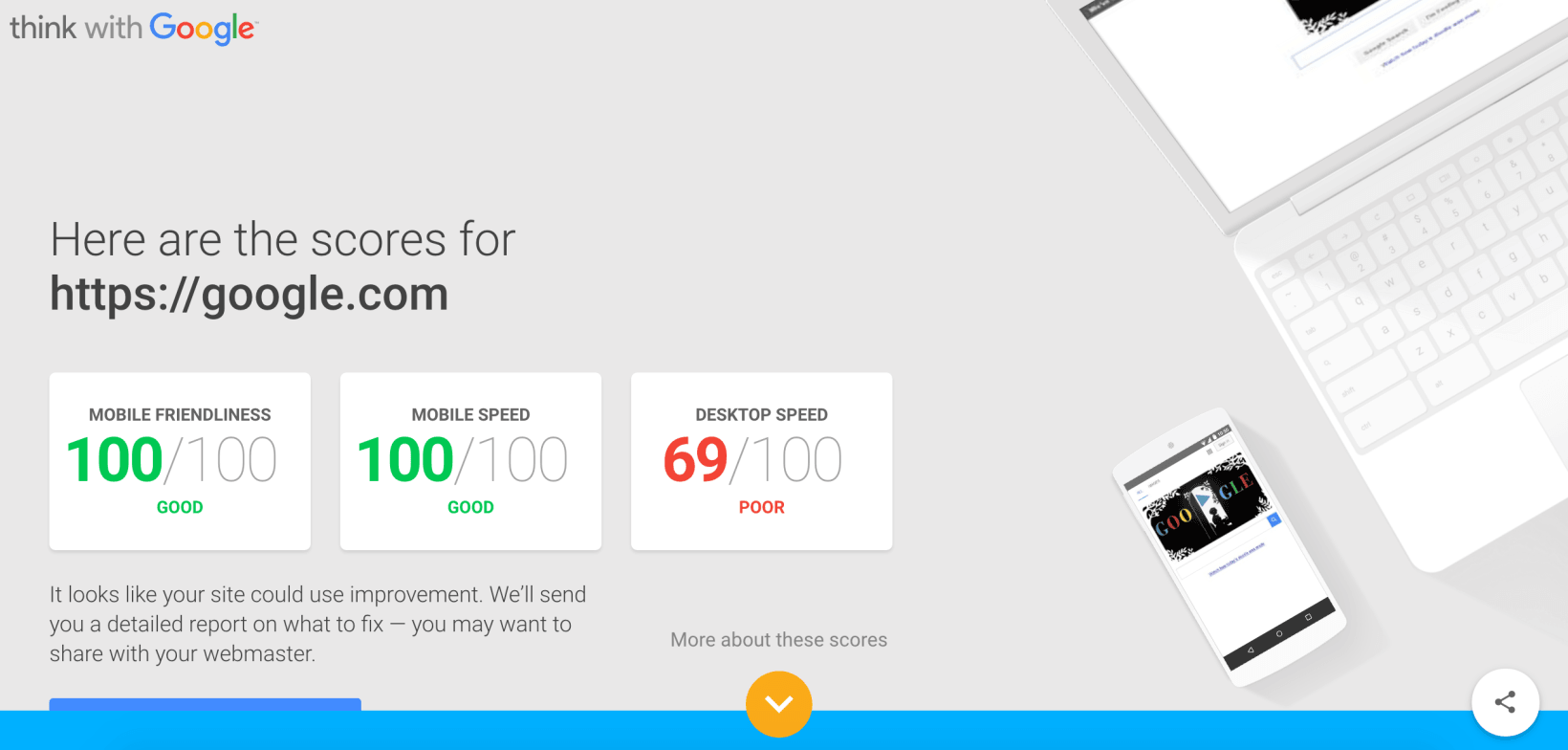The tool is product from the Think With Google team, which provides insights on how to best enhance your business online to attract, transform, and retain customers. The free service even provides an in-depth report on how to fix encountered problems. Just type in the URL for a homepage and it will return a score out of 100 for mobile friendliness, mobile speed, and desktop speed. However, to everyone’s surprise, the tool was not used by anyone at Google before it was made public. So, when The Next Web decided to put some websites to test on Think With Google, Google itself didn’t perform too well. The new site testing tool provides 3 categories of measurement, mobile friendliness, mobile speed and desktop speed. Each of these areas receives a score of 1-100 and a link to view ways to improve. While Google.com scored perfectly for mobile friendliness and mobile speed, it got a poor 69 out of 100 for desktop speed. But whatever caused that low score appears to have now been fixed, with Google scoring 100 across all three measures.
Test My Site also found problems with Facebook.com, and provided remedies on how to fix its poor mobile speed. Apparently, YouTube.com is also poor on mobile speed. Both sites need to avoid landing-page redirects, and “eliminate render-blocking JavaScript and CSS in the above-the-fold content”, while YouTube additionally needs to highlight visible content and use browser caching. However, one site that did score well on all counts was Microsoft’s bing.com. Also, Gmail performed well by scoring 96 out of 100 in mobile friendliness.
Think With Google helps businesses enhance their websites by making them mobile friendly. The Test My Site feature allows users check a websites’ speed on mobile, and desktop. Think With Google recommends businesses on how to create useful apps, how to create effective mobile content, latest trends based on Google’s Search data, etc. Here’s what Google says your scores say about your site: Mobile-friendliness: This is the quality of the experience customers have when they are browsing your site on their smartphones. Your site should be easy to navigate from a small screen, have tappable buttons, and have the most important information up front and center in order to be mobile-friendly. Mobile speed: This is how long it takes your site to load on mobile devices. If customers are kept waiting for too long, they will move on to the next site. Desktop speed: This is how long it takes your site to load on desktop computers. It’s not just the strength of your customers’ web connection that decides speed, but also the components of your website.

